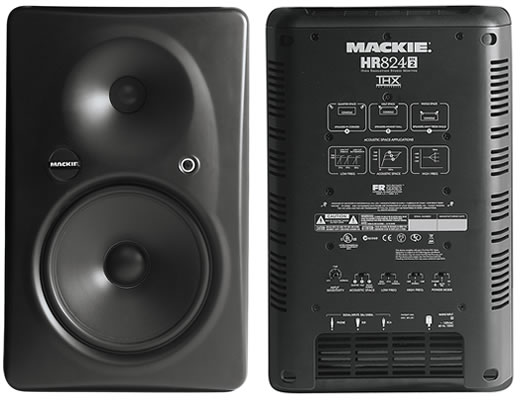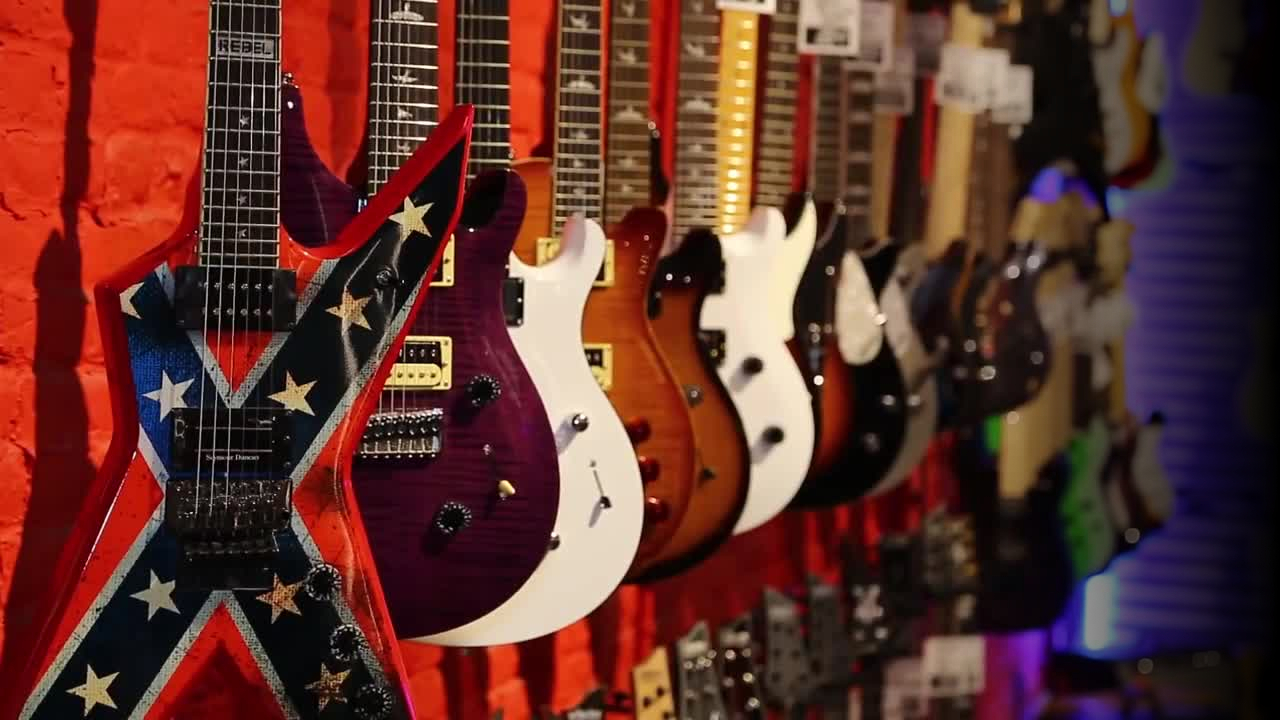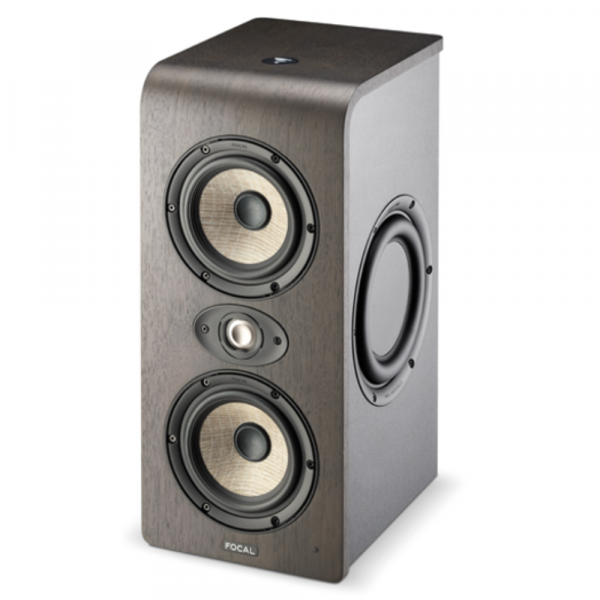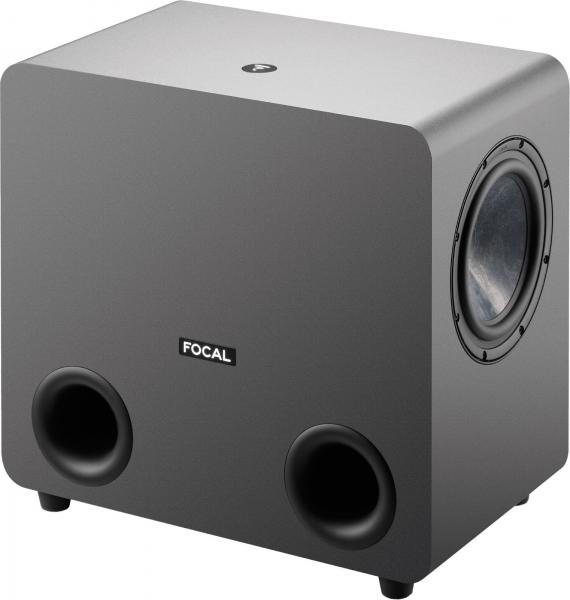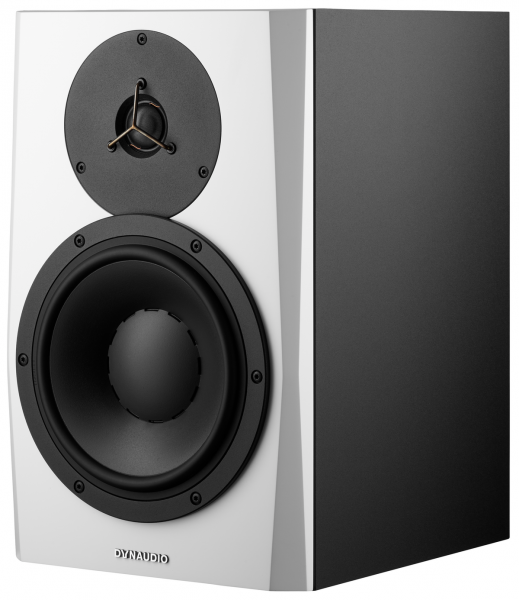Mackie HR824 MK2 - por unidades
SOBRE EL PRODUCTO
Monitor activo MACKIE Hr824 mk2.
CARACTERÍSTICAS
Worldwide standard high-resolution professional studio monitor with true Active design
8.75" low-distortion LF transducer with onboard passive-radiator provide ample, tight bass response down to 37Hz
1" HF transducer loaded onto logarithmic waveguide for wider dispersion pattern more closely matching that of LF driver
True Active design with FR Series amplifiers—150W for LF / 100W for HF with onboard time- and phase-correction crossover
Low Profile design, ideal for left, right, center (LRC) applications
Acoustic Space, LF roll-off and HF adjustment controls for use in matching the acoustic properties of any room
Non-fatiguing through hours of use
XLR, 1/4" and RCA inputs
Low Profile design, ideal for left, right, center (LRC) applications
THX pm3 approved for 5.1 and 7.1 surround mixing and playback
Released in 1996, the Mackie HR824 High Resolution Studio Monitor redefined what the marketplace looks for in a studio reference monitor. One of the most loved and trusted near-field monitors of all time, the HR824 is found in countless professional studios—thanks to its clarity, broad stereo imaging, ruler-flat response, and extended low-frequency range versus other studio monitors. The Mackie HR824 was also approved for THX compliance on its initial trial.
Onboard FR (Fast Recovery) amplifiers provide 150 watts to the 8.75” German-engineered MF/LF driver (aka the “woofer”) and 100 watts to the waveguide-loaded HF driver (aka the “tweeter”). The result is a smooth, accurate transition from lows to highs, with an ample 100dB SPL@1 meter output. Frequency response is verifiably flat from 39Hz-20kHz, with a 3dB down point at 37Hz. With extremely even dispersion for a wide "sweet spot" and user-adjustable controls for a variety of acoustic spaces, the HR824 is not only the choice of hundreds of professional studios, they can also be found in the tour buses and home studios of many top recording artists.
A TRUE ACTIVE DESIGN
Several years ago, many manufacturers started using “Active” interchangeably with “Powered” in describing their studio monitors. But make no mistake; a true “Active” design means that a studio monitor contains separate onboard amplifiers for each driver, plus onboard Active crossovers (which eliminates the need for external processing and eliminates phase anomalies), and time-correction circuitry, so the highs and lows reach the listener at the same time. You can trust this internal amplification and processing to push HR824 speakers to the “max” without any danger of pushing them beyond their limits—as well as bring you the sound quality that our engineers intended in all instances.
WAVEGUIDE-LOADED TWEETER
Move off-axis with passive monitors (and most powered monitors, for that matter) and you will experience prominent midrange and high frequency dispersion problems. In contrast, the HR824's waveguide-loaded tweeter greatly improves both vertical and horizontal coverage, and allows to match the high-frequency polar pattern to that of the bass transducer (the "woofer") for seamless midrange transition. Thanks to the computer-assisted design of the logarithmic waveguide the HR824's high-frequency imaging is stunningly accurate, delivering a much broader sweet spot than almost any other monitor on the market today.
EXTENDED LOW-FREQUENCY RESPONSE
The HR824's extended low frequency response is achieved, in part, by a mass-loaded 6"x9" honeycomb passive radiator that fires out the rear of the enclosure. This passive radiator works in concert with the high-precision, German-designed LF driver to deliver extended low-end response without resorting to a "ported cabinet" design. How does it work? Servo-feedback circuitry monitors the LF transducer's motional parameters and applies appropriate control and damping using the passive radiator. This constant correction produces tight, articulate bass without the tubbiness, distortion or overhang common among most small monitors.
Ref. Euroguitar : 5792
8.75" low-distortion LF transducer with onboard passive-radiator provide ample, tight bass response down to 37Hz
1" HF transducer loaded onto logarithmic waveguide for wider dispersion pattern more closely matching that of LF driver
True Active design with FR Series amplifiers—150W for LF / 100W for HF with onboard time- and phase-correction crossover
Low Profile design, ideal for left, right, center (LRC) applications
Acoustic Space, LF roll-off and HF adjustment controls for use in matching the acoustic properties of any room
Non-fatiguing through hours of use
XLR, 1/4" and RCA inputs
Low Profile design, ideal for left, right, center (LRC) applications
THX pm3 approved for 5.1 and 7.1 surround mixing and playback
Released in 1996, the Mackie HR824 High Resolution Studio Monitor redefined what the marketplace looks for in a studio reference monitor. One of the most loved and trusted near-field monitors of all time, the HR824 is found in countless professional studios—thanks to its clarity, broad stereo imaging, ruler-flat response, and extended low-frequency range versus other studio monitors. The Mackie HR824 was also approved for THX compliance on its initial trial.
Onboard FR (Fast Recovery) amplifiers provide 150 watts to the 8.75” German-engineered MF/LF driver (aka the “woofer”) and 100 watts to the waveguide-loaded HF driver (aka the “tweeter”). The result is a smooth, accurate transition from lows to highs, with an ample 100dB SPL@1 meter output. Frequency response is verifiably flat from 39Hz-20kHz, with a 3dB down point at 37Hz. With extremely even dispersion for a wide "sweet spot" and user-adjustable controls for a variety of acoustic spaces, the HR824 is not only the choice of hundreds of professional studios, they can also be found in the tour buses and home studios of many top recording artists.
A TRUE ACTIVE DESIGN
Several years ago, many manufacturers started using “Active” interchangeably with “Powered” in describing their studio monitors. But make no mistake; a true “Active” design means that a studio monitor contains separate onboard amplifiers for each driver, plus onboard Active crossovers (which eliminates the need for external processing and eliminates phase anomalies), and time-correction circuitry, so the highs and lows reach the listener at the same time. You can trust this internal amplification and processing to push HR824 speakers to the “max” without any danger of pushing them beyond their limits—as well as bring you the sound quality that our engineers intended in all instances.
WAVEGUIDE-LOADED TWEETER
Move off-axis with passive monitors (and most powered monitors, for that matter) and you will experience prominent midrange and high frequency dispersion problems. In contrast, the HR824's waveguide-loaded tweeter greatly improves both vertical and horizontal coverage, and allows to match the high-frequency polar pattern to that of the bass transducer (the "woofer") for seamless midrange transition. Thanks to the computer-assisted design of the logarithmic waveguide the HR824's high-frequency imaging is stunningly accurate, delivering a much broader sweet spot than almost any other monitor on the market today.
EXTENDED LOW-FREQUENCY RESPONSE
The HR824's extended low frequency response is achieved, in part, by a mass-loaded 6"x9" honeycomb passive radiator that fires out the rear of the enclosure. This passive radiator works in concert with the high-precision, German-designed LF driver to deliver extended low-end response without resorting to a "ported cabinet" design. How does it work? Servo-feedback circuitry monitors the LF transducer's motional parameters and applies appropriate control and damping using the passive radiator. This constant correction produces tight, articulate bass without the tubbiness, distortion or overhang common among most small monitors.
Ref. Euroguitar : 5792

